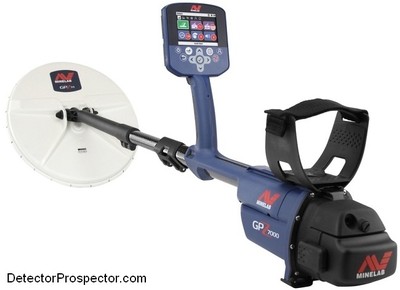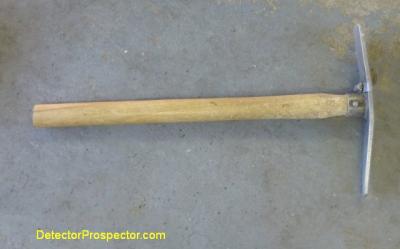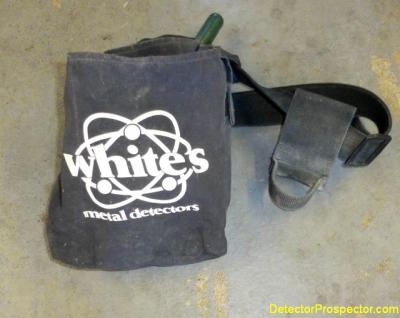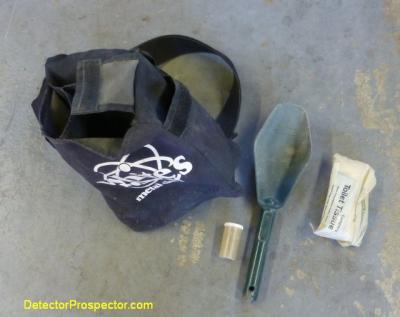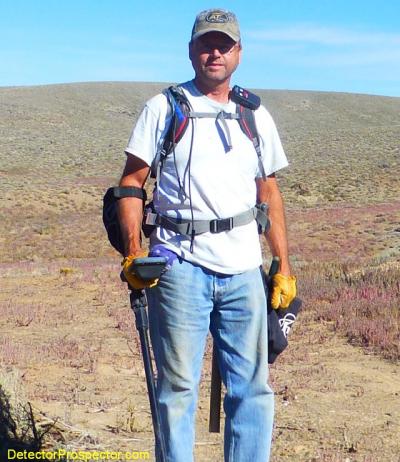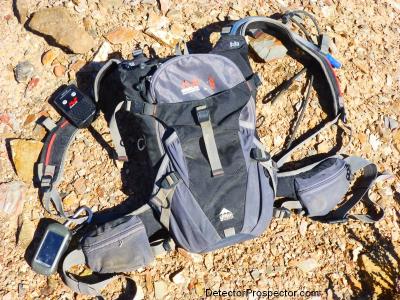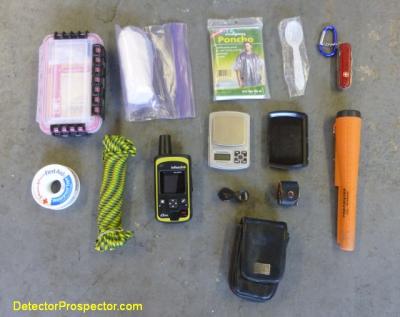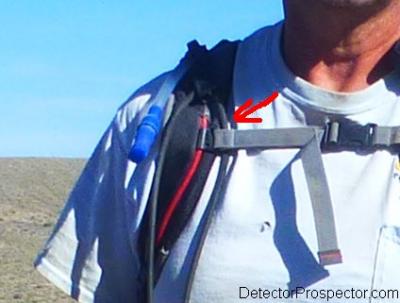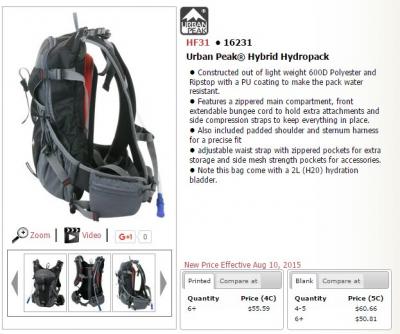Search the Community
Showing results for '"GPZ 7000 ferrite"'.
-
The Minelab GPZ 7000 was introduced in 2015 and is still in production. “This revolutionary new ZVT technology far surpasses GPX detectors for detecting deep large nuggets AND finding gold at any depth. The GPZ 7000 will open up the gold fields again.” -Bruce Candy, GPZ Inventor "I have been using the Minelab GPZ 7000 for some time, first as a tester prototype versions, and now as an owner of one of the first production line models. I did not find the GPZ 7000 to be a detector that immediately wowed me. Instead, it is a detector that reveals itself with use. However, I did finally have my Eureka Moment with the GPZ 7000 and after that there was no turning back. I sold my Minelab GPX 5000 and the large collection of accessory coils and other options I had accumulated for it. I am fully convinced that using the GPZ 7000 in the future gives me a better chance of finding gold, especially certain types of gold previously undetectable by other detectors." - Steve Herschbach The GPZ 7000 housing is obviously based on that used on the earlier Minelab CTX 3030 model. The battery is slightly larger and has twice the capacity of the battery on the CTX 3030. The batteries are compatible with each other (you can use the smaller CTX battery on the GPZ 7000) and use the same charger system. The Minelab GPZ features a simple LCD menu system with GPS locating and PC mapping options. One set of screen options controls the metal detector settings, while another set controls the integrated GPS tracking and mapping system. The GPZ 7000 is fully weatherproof and the GPZ 14 coil is fully waterproof to 1 meter. New coils, when purchased, will come with the short lower rod section attached plus an included scuff cover / skid plate. Currently the GPZ 7000 has only two coils available, the stock 14" x 13" GPZ 14 Super D coil, and the 19" x 18" GPZ 19 coil. Rumors persist of both a small coil in the works from Minelab, plus possible aftermarket coils. The coil that comes with the GPZ 7000 is remarkable however in the combination of sensitivity to small gold and depth on large gold that it covers. Minelab GPZ 7000 gold nugget detector with Zero Voltage Technology (ZVT) I am fortunate to have had the opportunity to field test the new Minelab GPZ 7000 detector. It allowed me time to make decisions regarding my own use of detectors earlier than most people. It also gave me a place first in line and I now have a brand new GPZ 7000 of my own. My use of the GPZ 7000 combined with what I think I know about how it works made me decide I had to have one. I am in my detecting prime right now and plan on spending a huge amount of time swinging a detector looking for gold now and in the future. I will never use just one detector for everything but the fact is that I can only swing one detector at a time. I need to decide what detector will be my primary unit for the bulk of my detecting. What one machine will best return my investment of time and effort in possible gold finds? I have decided that machine is the Minelab GPZ 7000. The GPZ with its 14" x 13" Super D coil provides an across the board powerful solution for getting gold both large and small on the first pass. Most ground I pass a coil over I have exactly one chance of finding a target. It has to happen on that first pass. Sure, when I am beating a patch to death I may hit the same area over and over. But most of my detecting is all about being over ground I have never been over before. I have to have confidence the machine I am using is going to give me my best shot at getting whatever is there on the first and likely last pass of the coil. As far as I am concerned all the percentages and charts and stuff is something others can debate, though I will post some thoughts on that separately. The bottom line is I am convinced the GPZ 7000 does give me a technological edge at this time, and that by applying that edge early and as often as I can I am increasing my odds of finding gold. If I never said another word about the detector that really just sums it up. I thought very hard about whether I should keep my GPX 5000. I decided any time spent with it would detract from the advantage I would enjoy by using the GPZ instead. It should not have been lost on people that I sold my GPX 5000 and almost every accessory I owned for it. That alone should tell you everything you need to know about what I think of the GPZ 7000. I even sold my SDC 2300. I was tempted to keep it until a smaller coil becomes available for the GPZ. Small coils are a must for nooks and crannies and other places larger coils can't fit. Yet as I considered it all I had to question just how much use the SDC 2300 would get if I had access to a GPZ 7000, and the answer was not very much. It found a new home. ads by Amazon... The GPZ 7000 does not replace or take away from the SDC 2300 and GPX 5000 in the current Minelab lineup. They are both fantastic units. The GPX 5000 and its vast ecosystem of coils and other accessories remains the no-brainer best value for many people. The SDC 2300 will continue to be the hot small gold sniper it has been proven to be. A person who owns both will have much of the power of the GPZ 7000 already at their disposal. The thing is the GPZ 7000 to the best of my determination so far seems to offer almost everything those two models offers in a single unit, and then goes farther yet. I can't swear that under every circumstance and in every scenario that the GPZ 7000 trumps the SDC 2300 or GPX 5000. Certainly in the case of the GPX 5000 all those accessory coil options do matter, especially where ground coverage is job one. The SDC does have that little coil. All I can say is that for that proverbial one pass over any particular chunk of ground I have to pick the GPZ 7000 as my best bet for getting whatever gold is there or missing it forever. And for hitting already hunted ground it is going to find gold both those detectors will miss no matter how many times they pass over the ground. The GPZ 7000 in my opinion is the best overall single solution available. If I was told I had to sell all but one machine and could only use one detector for gold prospecting I would without hesitation choose the GPZ 7000. In closing, I suddenly see a bright future ahead. I really had given up on there being anything significantly better than a GPX 5000. The GPZ however is not the end of the road but just the beginning. As good as it is it is not perfect and I am certain we will see further improvements as the platform is refined in the future. That first step is often the biggest and the GPZ in its way is every bit the breakthrough the SD 2000 was when it was released. Nobody can put back all the gold that has been detected in the twenty years since but the GPZ 7000 is definitely the next step in getting what is left. My thanks to Minelab for being able to say I had a part in this, small as it has been. Thanks especially for investing the huge amount of dollars and people power it took to make this happen for us, the prospectors of the world. Were it not for Minelab electronic prospecting would not be near what it is today. ~ Steve Herschbach Copyright © 2015 Herschbach Enterprises Official Minelab GPZ 7000 Page GPZ 7000 Instruction Manual Minelab GPZ 7000 Color Brochure Minelab GPZ 7000 Ferrite Field Guide GPZ 7000 Software Update Page Official GPZ 19 Accessory Coil Page GPZ 7000 Zero Voltage Transmission (ZVT) Explained GPZ 7000 Tips For Better Ground Balance GPZ 7000 In Difficult Ground Conditions Forum Threads Tagged "minelab gpz" Minelab Metal Detectors Forum Minelab GPZ 7000 Technical Specifications* Internet Price $7999 Technology ZVT - Zero Voltage Transmission Frequency N/A Autotune Mode(s) Preset Slow Motion Ground Rejection Automatic, Semi- Auto, and Fixed Soil Adjust Normal, Difficult, Severe Discrimination No Volume Control Yes Threshold Control Yes Tone Adjust Yes Audio Boost No Frequency Offset Yes Pinpoint Mode No Audio Output 1/4" Headphone Socket, Wireless Module With Speaker, Headphones supplied Hip Mount No Standard Coil(s) 14" x 13" GPZ 14 Super-D Optional Search Coils 19" x 18" GPZ 19 Battery Li-Ion Rechargeable Pack, 7.2V, 72Wh Operating Time 8+ Hours Weight 7.32 lbs. Additional Technology Integrated GPS With PC Mapping Interface Notes Weatherproof *Notes on Technical Specifications - Detailed notes about the specifications listed in this chart. Using the GPZ 7000 Part 1 by Nenad Lonic Using the GPZ 7000 Part 2 by Nenad Lonic Using the GPZ 7000 Part 3 by Nenad Lonic
-
Welcome to the forum! Older GPZ threads are in the GPZ 7000 Archive More recent threads that have not made it to the archive yet (those posted in the last year) can be found using the GPZ 7000 Tag You can get very specific on finding information on specific subjects by using the Advanced Forum Search For instance here is the result GPZ 7000 Ferrite The modes and tuning methods people use are specific to their locations and hunting habits. Two people each using a GPZ 7000 at the same location may have vastly different ideas about what settings are best and how to set the machine up. Truthfully this subject has been discussed in great detail on the forum so do please avail yourself of the resources above. I unfortunately am on another mission right now so will leave it there and for others to chime in.
-
I am not saying my way is the best or anything like that, but I figure for newcomers at least some idea of what a person might need detecting would be helpful. Click images for larger versions. Steve in the field This is what I look like out detecting. In Alaska I would probably be in a rain jacket and mosquito headnet but things are a bit nicer down south! Main thing to note here is I am using a small camelback style rucksack which serves three purposes. It is my detector support harness, it contains some essential items, and it gives me a quick sip of water when I need it. The GPZ 7000 bungee clips to my right shoulder next to the water tube. The speaker module goes on the left shoulder under my good ear. I pretty much always use the module unless wind forces me to go to headphones. The bungee wanted to pull off my shoulder but I found a simple solution by routing it under the cross strap that connects the shoulder straps. I use the standard GPZ 7000 velcro/clip on the detector itself to attach the bungee. I really like how easy it is to disconnect from the detector while digging, etc. which is also facilitated by the remote speaker. Closeup of bungee routing The rucksack is a freebie I got at the Minelab convention a couple years ago (thanks Minelab). It is an Urban Peak Hybrid Hydropack with 2 liter water capacity and for a item I got quite by chance it turns out to be about perfect for me and my use. My rucksack/bungee harness I use the GPS system built into the GPZ 7000 pretty religiously these days but still am also using my Garmin GPS which is clipped to my left shoulder strap for easy access. You can see in the right hand belt pocket the GPZ 7000 ferrite ring ready to use if I ever need it. Here are the contents of the rucksack: Items in the rucksack The waterproof container in upper left has basic first aid supplies, bandaids, pain killers, moleskin, lighter, emergency blanket/tarp, etc. Next is a plastic baggie with emergency toilet paper. Then a cheap plastic disposable poncho in case I get caught by a sudden downpour. A plastic spoon and a Swiss Army knife. Next row some waterproof first aid tape good for lots of things. Some parachute cord. A Delorme InReach emergency satellite communications device. A digital scale with cover and 10X loupe/magnifier with cover. A Garrett AT Propointer and finally, my camera. Often a spare GPZ battery or food or other items join this stuff but these are the items always with me. I have long been a fan of the White's belt pouch (P/N 601-0066 $14.95). It has three main compartments and two little side compartments with velcro closures. The largest main compartment gets all the trash I find. A smaller compartment has my gold bottle and maybe my camera or a water bottle. The third compartment is a holster for my digging scoop. One of the two side compartments has more emergency toilet paper (can't have too much) and maybe spare AA batteries if I am using a VLF. The belt is nothing special just a nylon utility belt. It has a nylon pick holder mounted to hold my pick when I am not actually using it. Trash and goodie pouch with side compartments Finally, the pick. In Alaska I hunted tailing piles a lot and so favored picks with big hoe digging implements. Now with the GPZ I want the metal at a minimum and I find I do not need a digging hoe so much in the desert and such down south. So this is a Hodan 24" digging pick which does all I need. It has a super magnet stuck on the head, with a small hose clamp placed ahead of it that keeps the magnet from sliding off when I dig aggressively. Digging pick Oh yeah, the gloves. I always wear gloves to protect my hands when digging and just in general. I have had people comment that some of my photos must be staged because my hands are always clean! Anyway, that's about it. I am going to put my camera in a pouch on my left shoulder right under the speaker module so it is always handy. I saw a bunch of antelope recently and the camera was in the rucksack. No good as sometimes you only get seconds for a good photo. Other than that I am pretty happy with my setup. Like I said, it is not what everyone needs and lacks some things some people might need, but it at least offers an idea and suggestion for things to consider. Urban Peak Hybrid Hydropack


